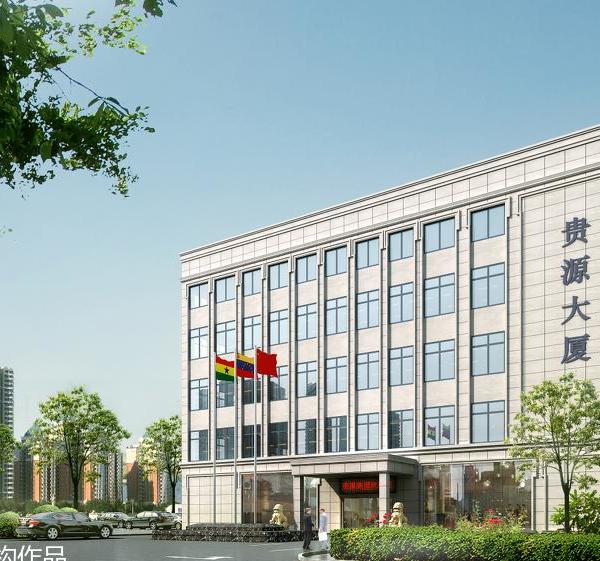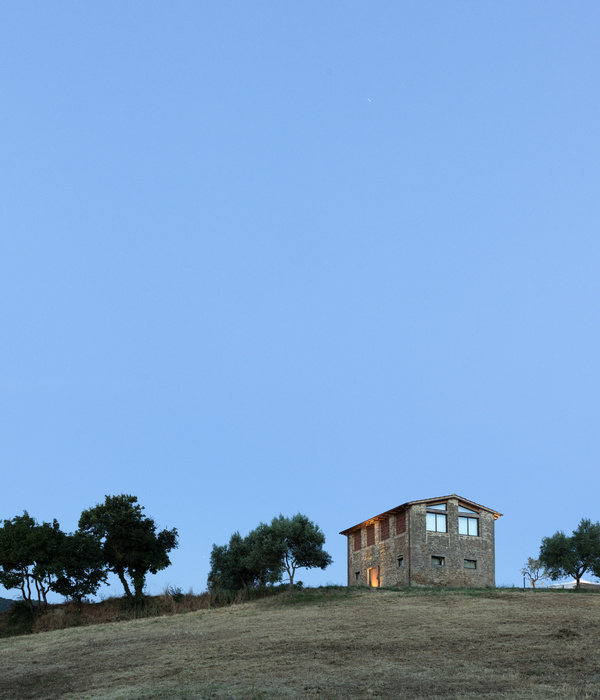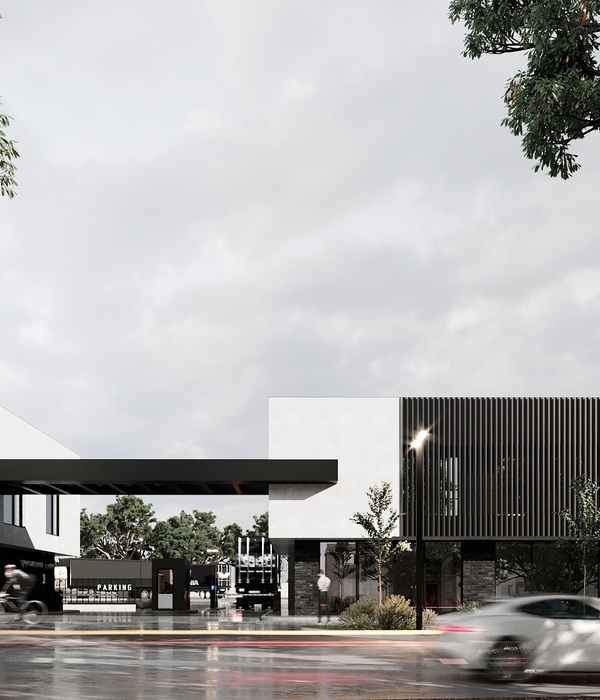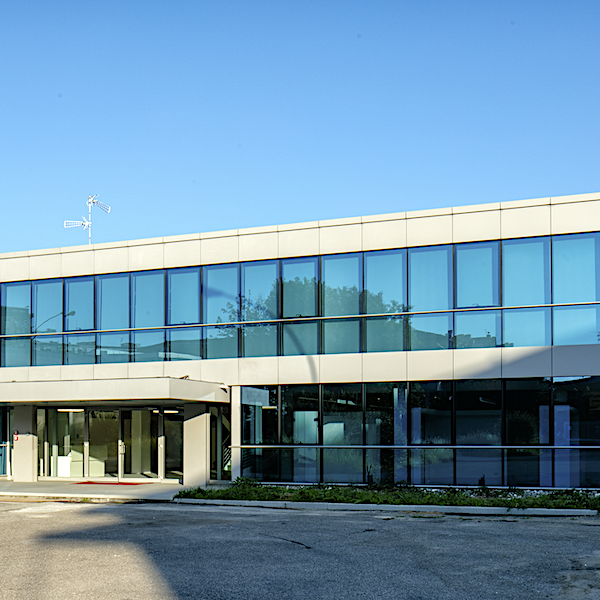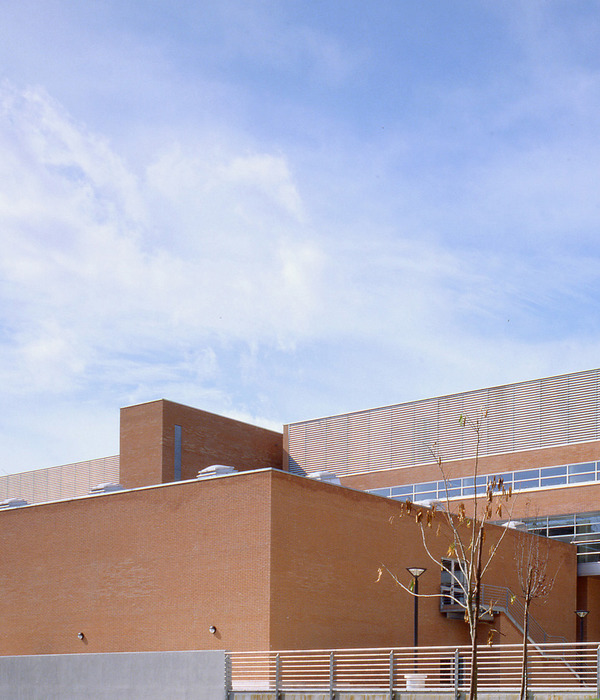来自
Speech
.
Appreciation towards
Speech
for providing the following description:
卢日尼基球场由建筑师Alexander Vlasov于1955年到1956年主持设计并建造。该场馆坐落于莫斯科1930年代城市规划的主轴线上,该轴线串联了克林姆林宫,基督教堂和莫斯科公立大学等城市重要地标。卢日尼基球场曾是1980莫斯科奥运会主会场。自2013年起,该场馆便因为重修工程而暂时关停。2018年该场馆将再次开启,成为俄罗斯世界杯的举办场地之一,并将迎来此次世界杯的总决赛。
Luzhniki Stadium was designed and built in 1955-1956 under the supervision of architect Alexander Vlasov. The stadium is situated on a planning axis created by the 1930s masterplan for Moscow and linking key sites in the city such as the Kremlin, the Church of Christ the Saviour, and Moscow State University. In 1980 Luzhniki was the main arena for the Olympics. It has been closed for reconstruction since 2013. In 2018 it will a venue for World Cup football matches, including the cup final.
▼鸟瞰图,aerial view ©DMITRY CHISTOPRUDOV
▼体育馆位于城市规划主轴线上,the stadium is situated on a planning axis ©DMITRY CHISTOPRUDOV
此次重修工程由位于莫斯科的建筑工作室SPEECH architectural office主持设计,该项目以维护这栋历史建筑的墙壁及屋顶外貌为基本前提,要求建筑师在现有建筑形态的限制下,增大场馆容量和使用面积,并最终实现符合国际足球联盟比赛标准的世界级体育场馆。
The key objectives of the reconstruction project made by SPEECH architectural office (Moscow) have been on the one hand to preserve the stadium’s external appearance (the stadium’s historical wall and roof) as an icon of Russian sport and on the other to fulfil all FIFA’s requirements with regard to floor areas and capacity. This meant that the difficult task facing the planners and designers was to fit all the required functions into the existing geometry.
▼保留原建筑外貌,preserve the stadium’s external appearance ©DMITRY CHISTOPRUDOV
▼ ©ILYA IVANOV
改造翻新后的体育场馆拥有81 000最大容量,相比老场馆增加了3000坐席。在此次改造项目之前,原体育场有百分之十的坐席视觉空间被限制在有限的范围内。设计师将这一坐席区重新设计在双层倾斜坡面上,并在其上的第三层空间设置100个观赛包厢。这一改造意味着所有球迷都可以在场馆的任意座位观赏到精彩的比赛。此外,场馆还新加入了1950个VIP包厢,为观赛者带来更加舒适的体验。
The renewed Large Sports Arena has a maximum capacity of 81 000, which is 3000 more than previously. Furthermore, prior to reconstruction, approximately 10% of seats in the stadium were in a zone where there were limited views of play. The stands have for this reason been replaced with two tiers raked at a steeper angle; additionally, there is a third tier consisting of 100 skyboxes. These changes mean that football fans now have a great view of the pitch from any point in the stands (including the bottom and top rows). There are also new comfortable VIP boxes with capacity for 1950 spectators.
▼改造后的体育馆相比老场馆增加了3000坐席,the renewed Large Sports Arena has 3000 more seats than previously ©DMITRY CHISTOPRUDOV
▼改造后的所有坐席都将获得全景的观赛视野,football fans now have a great view of the pitch from any point in the stands ©ILYA IVANOV
▼场馆内楼梯,the staircase ©ILYA IVANOV
▼©DMITRY CHISTOPRUDOV
▼©ILYA IVANOV
▼VIP包厢,the VIP box ©ILYA IVANOV
该场馆包括环绕建筑主体外侧的柱廊,柱廊内侧墙壁及屋顶形态被最大限度的保留。设计师在此历史外墙的内侧打造了全新的步行走廊,一部抓人眼球的瀑布型楼梯,带领观赛者穿梭在场馆的各层之间。该场馆外侧新嵌入的唯一装饰是环屋顶铺设的带状金属板,这些穿孔金属板描绘出了各种形式的运动姿态。该金属板上的图形设计来自于Art Lebedev Studio。位于场馆周身23米处的观景台,将面向所有人开放。在这里来访者可以一睹莫斯科的城市风采,将麻雀山与学院美景收入眼底。
The stadium’s external appearance has been lovingly preserved, including the colonnade girdling the stadium, the inside wall, and the shape and sculptural form of the roof. Behind the historical wall an internal street has been created; its main feature is eye-catching cascades of staircases, which serve as the main way for spectators to get about. The only new element on the façade is a frieze in the form of a broad metal strip on which images of symbols of various types of sport have been created using perforation. The graphic design of this element was developed in collaboration with the Art Lebedev Studio. A 23-metre-high viewing platform is situated at the very top of the stands and will be open to all, providing an opportunity to admire the views which open up from here of Sparrow Hills, the University, and the city center.
▼场馆外侧新嵌入的唯一装饰是环屋顶铺设的带状金属板,这些穿孔金属板描绘出了各种形式的运动姿态,the only new element on the façade is a frieze in the form of a broad metal strip on which images of symbols of various types of sport have been created using perforation ©ILYA IVANOV
▼场馆包括环绕建筑主体外侧的柱廊,柱廊内侧墙壁及屋顶形态被最大限度的保留,the stadium’s external appearance has been lovingly preserved, including the colonnade girdling the stadium, the inside wall, and the shape and sculptural form of the roof ©ILYA IVANOV
▼保留的外墙内侧,the inside wall is preserved ©DMITRY CHISTOPRUDOV
▼瀑布型楼梯带领观赛者穿梭在场馆的各层之间,the eye-catching cascades of staircases serve as the main way for spectators to get about ©DMITRY CHISTOPRUDOV
改造之前,卢日尼基球场除作为赛场外还拥有酒店和体育活动房等用途。此次重修保留了球场的多功能性,并在南侧部分新置入了大型商业会议中心,于北侧置入健身中心,体育活动中心和温泉spa。改造后的足球场除承办体育赛事外,还将收获多种全新的功能。
Prior to reconstruction, Luzhniki was mixed-use, containing sports halls and a hotel. The stadium has retained a mix of functions; it now has a large business center in its southern part and a fitness center and universal sports hall and spa in its northern part. As well as football matches, the pitch can be used for mass events of various kinds (e.g. concerts).
▼夜景,night view ©DMITRY CHISTOPRUDOV
Client: KP BSA Luzhniki
General design and planning: Mosinzhproekt
Head of project team: Sergey Kuznetsov, chief architect of Moscow
Architecture, technology, site plan: SPEECH architectural office
Architects in charge: Sergei Tchoban, Alexey Shubkin, Nikolay Gordushin, E.Chernych, A.Fedorov. L. Korneeva, O.Lipis, A.Loginova, S.Lozhkina, E.Medvedeva, E.Serova
Structural engineering and engineering: OOO Metropolis
Graphic Design: Art Lebedev Studio
Glass: AGC
Glass production: AKMA
Facade set up: Front Engineering
Total area, including stands: 221 000 sq. m.
Total number of seats for spectators: 81 026
Project year: 2013-2014
Completed: September 2017
Photos: Dmitry Chistoprudov, Ilya Ivanov
{{item.text_origin}}


